#histroical
Text
longfic writers from 2010 fandoms with vast knowledge and really long authors notes explaining your research/knowledge and choices to put certain things in and stuff i LOVE YOU. I LOVE YOU. YOURE THE BEST IN THE WORLD. PLEASE TAKE A NOBEL PRIZE PLEASE TAKE A BILLION
#IM GOING INSANEEEEEEEEEE#DO YOU EVEN GET IT IM READING A FIC GOING INTO EXTREME DETAIL ABOUT MECHANICS RELIGION AND THE HISTROICAL PROGRESSION OF BOTH#IM LOSING MY MIND
135 notes
·
View notes
Text
I have to tell someone about the absolute monstrosity of a fic I found. It was so GOOD. THE CHARACTERISATIONS, THE SCENE SETTING, THE DIALOGUE, THE PERIOD ACCURATE LINGO, COSTUMING AND SETTINGS! And then it stopped in 2020. It received an update two weeks ago and it's a CRIME AGAINST HUMANITY!!! THERE ARE SHITE SMUT SCENES, RUINING CHARACTERS, EVERYTHING TO RUIN A FIC! AND THE WRITING IS SHIT!!! There was a scene where a woman ate a hotdog as foreplay. Then, in the smut and I quote "the crinkles are similar at the top, but I love that I can dip my tongue deeper into his cock slit and taste all the build up"
THIS FIC IS SET IN THE 1700S ENGLAND. HOTDOGS ARE AN 1800S AMERICAN PRODUCT. HOW DARE YOU. HOW DARE YOU
DID THE WRITER FUCKING DIE????? WHAT THE FUCK HAPPENED THAT THIS UTTER GARBAGE TOOK FOUR YEARS TO WRITE??
#fanfic#history#historic#ao3 fanfic#ao3feed#ao3#HOW DARE YOU#ruined one of my fav fics#please just abandon it#historical dress#histroically accurate
8 notes
·
View notes
Text

The Phoneix in the Air
Blurb
Caged in the rage of ruination. Use were, Claws as weapons and weapons as saving.
Peace was spreaded, long ago. Then came myths along, arising to be true. The disaster were inevitable.
Blood would shred.
Battles would be fought.
Choose, either freedom or slavery. None could have both.
~~
Myths, were false. They were folktales. It was all that they knew. Until, the end of world, flare-up upon them.
Werewolfs were discovered. Witches, and Vampire stumble along. Alas, magic was bestowed.
Declared battles. All and sundry had to save themselves. Humans from werewolf, werewolf from vampires, vampires from witches, and witches from humans. But indeed, End always have to arrive.
Let the battles begen.
Note: The story is written in third person as well as in first person.
#werewolf smut#literature#words#writers#werewolf#fated mates#lovers#couple#king and queen#mate#claimed#prophercy#mythical#histroical romance#paranormal#romance#kingdom#alpha#battles
8 notes
·
View notes
Text
Went to an exhibit today that seems terrified of the term "gender roles". They used "gender identity" in its place every single time even when it made no sense and also removed tons of historical context from the situation it was discussing because indicating that gender expression may be influenced by social preasures and not solely internal feelings is problematic now I guess???
#yes im sure coco chanel was exploring her masculine gender identity when she designed shorter and more practical clothes for women#in the 20s after the first world war gave many a taste of the freedoms and practicality of mens work clothing#im sure none of this histroical context is relevant and that their internal gender feelings just told them it was time
2 notes
·
View notes
Text
i gotta answer this like personal questionnaire thing for a project and its asking questions that i genuinely dont know the answer to
#what histroical figure do you relate to the most?#i dont fucking know???????????#what is your greatest achievement#<- not a question for people with shit memory#michi tag
0 notes
Text
All-of-a-Kind Family Review
All-of-a-Kind Family by Sydney Taylor
CW: Scarlet Fever, Money Problems, Lost Child, Police Propaganda, Parental Problems, Jealousy
5/5
I recently overheard a conversation about Little Women by Louisa May Alcott. I couldn't help but think about the fact that I've never read the book nor seen an adaptation. I was raised on Sydney Taylor's All-of-a-Kind Family instead.* Certainly they aren't quite the same, but it was my story collection about young girls in a large family. I decided it was time to revisit this part of my childhood, and I'm very glad I did! I have been able to gush about it with my mom and remember things that had been lost to time. Taylor is an excellent author and Suzanne Toren did an amazing job narrating the audiobook.
All-of-a-Kind Family is about 5 Jewish sisters growing up in a tenement house in New York City in the early 1900s. Ella, Henny, Sarah, Charlotte, and Gertie are all very close. The book follows these sisters, their family, and a family friend as they go through roughly a year of their life. This family loves the library, seeing new things, and finding clever ways to spend their allowance. They get themselves into a fair bit of trouble, but they always have each other to count on when that happens.
This book is told in vignette-like chapters as it progresses through time. Each one is a little story from their lives, but it retains continuity as it goes from one to the next. For example, the first chapter is about a lost library book. The book is being paid back throughout the rest of the chapters, being brought up in a couple of them. I quite enjoyed this style of writing. There were some background plot lines to tie the whole book together, but I was specifically captivated by the chapter-long plots. It kept me from being able to predict what would come next. This was a relief, for I had forgotten much of All-of-a-Kind Family in the decades since reading it last.
One of the most interesting things about reading All-of-a-Kind Family now is that it's historical fiction from before even my mom was born. The book was written about the turn of the 20th century, it was published in 1951, and I read it in 2023. I had a lot of fun trying to figure out what was included as historical and what was just normal for Taylor. Tenement life is not something I knew a lot about. It was interesting to learn about the candy they had, all of the peddlers trying to sell things, and the fashion, among other things.
I certainly loved all the Judaism in All-of-a-Kind Family! This is likely why I was raised on the series, because it was a group of young Jewish kids. I'm only one of 3 instead of the large number in this family, but there was still plenty of relatable content. I smiled at all the Yiddish included, the voices done by the narrator, and all of the holidays they celebrated. Although each holiday was explained to Gertie, the youngest child, it's clear that the book was written for a Jewish audience (but don't let that discourage you if you aren't Jewish!). It was interesting to see the religion from their perspective, as they're clearly more conservative than I am. Women did not typically go to synagogue, and when they did, they were separated into sections. They also had the two sets of dishes that kosher rules dictate. I keep kosher-style. This means that I follow the basic rules only. Not everyone practices Judaism the same way, so I appreciate that variety being represented in what I read.
All-of-a-Kind Family is aimed at children, likely to be read to them by their parents. Each chapter is very much its own story, the children are young, and the other characters are referred to in ways a child would (ex. Mama, Library Lady). Still, it seems to have transcended time and age-range. Someone of any age could get something out of this book. The point of view for the book is 3rd Person Omniscient. That means you get to know what's going through the minds of the adults too. It also has some relatively universal themes like familial love, money problems, a love for reading, and the weight of responsibility. Don't be afraid to read a children's book for your own pleasure, especially this one.
If you like historical fiction, books about Jewish characters, or stories that take place in New York City, give All-of-a-Kind Family by Sydney Taylor a chance! The girls and Mama have all kinds of adventures for you to join them on. And if you need me to up the stakes, if you're a fan of Little Women, you can challenge me to read that while you read this! Now let's get to reading about these book lovers!
*I want to make it clear that I am snubbing Little Women, it just wasn't part of my childhood.
#all-of-a-kind family#sydney taylor#jewish authors#jewish books#book blog#bookblogger#jewish family#jewish histroical fiction#historical fiction#turn of the century#tenement#jewish nyc#suzanne toren#nostalgia read
1 note
·
View note
Photo

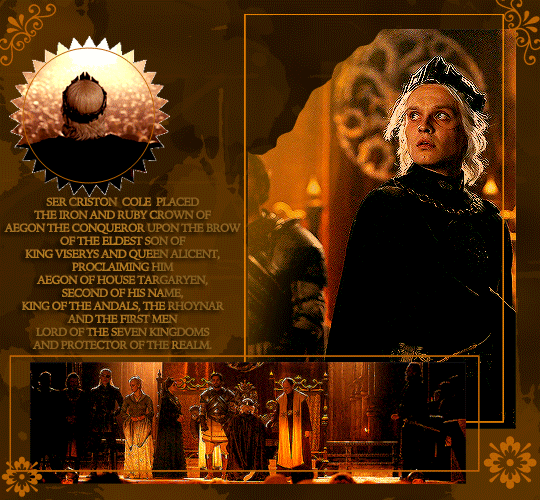


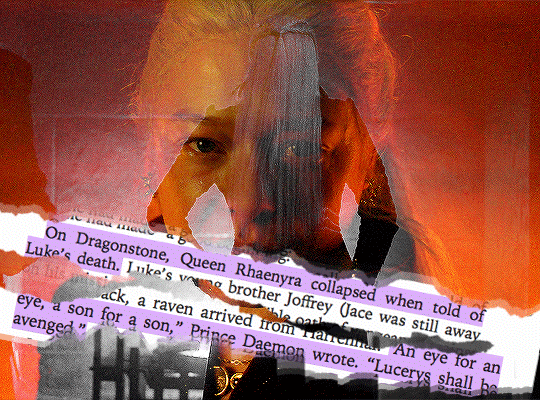
TARGARYEN WEEK
Day 4 • Favorite Histroical event
The Dance was a war unlike any other ever fought in the long history of the Seven King Kingdoms. Though armies marched and met in savage battle, much of the slaughter took place on water, and…especially…in the air, as dragon fought dragon with tooth and claw and flame. It was a war marked by stealth, murder, and betrayal as well, a war fought in shadows and stairwells, council chambers and castle yards with knives and lies and poison.
#targaryensource#house of the dragon#hotdedit#gameofthornesdaily#targaryenweek#gotedit#asoiaf#asoifedit#the dance of the dragons#userzoya#userbecca#this is all over the place#i hate the last gif i tired but i couldn't fix it#gifs#*
407 notes
·
View notes
Photo

A PCC-type streetcar climbs Market Street on San Francisco’s F-Market & Wharves histroic streetcar line. Not to be confused with a historic cable car, this is a modern electric trolley that draws power from the overhead wire.
9 notes
·
View notes
Note
me; histroical paintings of mcd characters
me now not even 1/2 done and its been 5 hours;
Ah. Well, I believe the process and time will be worth it tho! :3
7 notes
·
View notes
Text
[Podfic] 'Love and Other Histroical Accidents' by PacificRambaud
[Podfic] 'Love and Other Histroical Accidents' by PacificRambaud
https://ift.tt/pvfA4jC
by thedramionearchives (dittanyanddreams)
Hermione Granger and Draco Malfoy never intended to blow up their life's work, but that's rather what they've gone and done. Now they're trapped 200 years in the past, with a broken Time Turner, a missing snuff box, a handful of overly-eligible daughters, and a House-elf in a cable knit cardigan. It will require the combined power of their keen intellects to get them home, if they'd stop arguing long enough to use them.
As it turns out, history is just one damned accident after another.
For fans of Harry Potter, Jane Austen, and Connie Willis, a historical romantic comedy all about time, and getting the hell out of it.
Words: 14, Chapters: 1/1, Language: English
Fandoms: Harry Potter - J. K. Rowling
Rating: Mature
Warnings: No Archive Warnings Apply
Categories: F/M
Characters: Draco Malfoy, Hermione Granger, Original Characters
Relationships: Hermione Granger/Draco Malfoy
Additional Tags: Comedy, Romantic Comedy, Historical, Romance, Alternate Universe - Time Travel, Time Travel, Banter, Harry Potter Epilogue What Epilogue | EWE, Major Character Injury, Traumatic Injury, Brief Mentions of Blood, Alcohol, In Vino Veritas, Miscommunication, Pining, Co-workers, Lack of Communication, Slow Burn, Swearing, Angst, Eventual Sex, Sexual Content, Happy Ending, Comedy of Errors, Podcast, Podfic & Podficced Works, Podfic
via AO3 works tagged 'Hermione Granger/Draco Malfoy' https://ift.tt/kB56rK7
April 02, 2024 at 07:06PM
3 notes
·
View notes
Text
Frislandic Dialectal Phonology
OK, let's tackle this dialectal business. I'll talk about the phonology because that's what I have clear and concreate thoughts on, but obviously there's other differences too in morphology and lexicon that will be explored some other time. This isn't a post about features of contermporary colloquial Frislandic speech.
I will try and make a map of Frisland at some point to make the actual geography more transparent but for now if you need a geographic reference the Mercator Map (below) should suffice (noting of course that the forms of the names I'm using here are different from how they're represented on the map.
(If you need reminding the histroical phonology post is here).
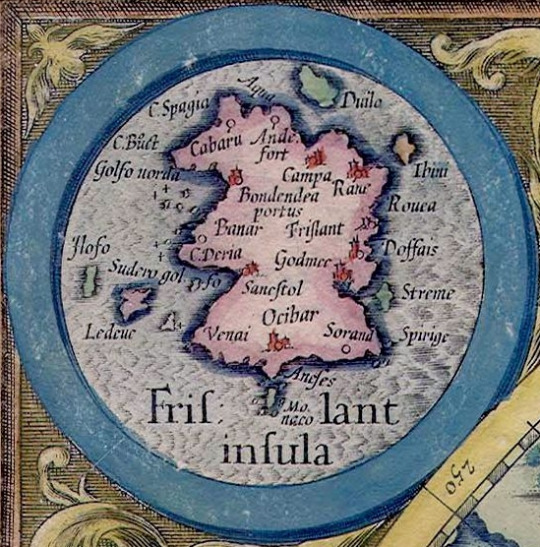
Traditional Frislandic dialectology is multi-polar, reflecting the somewhat de-centralised nature of Frislandic governance. Each æl (kinda equivalent to 'burg' or 'polis') is seen as the centre of its own dialectal region, and so phonological variation is often characterised as revolving around this. Of course in practice administrative boundaries and linguistic isoglosses don't ever line up neatly, but for the most part this does work as a model of how the variation is distributed.
Geography naturally plays a large part in this. Frisland shows a marked geographic cline running from east to west, with the western half being substantially more rugged and mountainous compared with the relatively low-lying (though still definitely not flat) eastern half. This has several effects. Firstly, population density is by and large concentrated in the eastern half of the country, where the climate is milder and the land can better support agriculture. Secondly, and on the flipside to this, there is a greater degree of dialect diversity in the west than in the east. In particular, the ælu of Bondeduo (B) and Sændetoll (S), which sit at the heart of the two great bays that characterise Frisland's western coast, each boast traditional dialects which are both singificantly different from the standard (based partly on the varieties of the capital Ojbar and the religious centre of Dorsiðes) and from each other. By contrast, the western ælu of Ojbar (O), Guoðvakk (G), Dorsiðes (D), Eran (R) and Kamba (K) sit along what is in effect a dialect continuum, though traditional authors would still maintain these as fully distinct varieties, in spite of continuing
There are also 'insular' varities (not an actual group linguistically of course) on the various islands off the Frislandic coast. The most distinctive is that of Llæðuju (L) and sister island Llovu, which are noticeably distinct from the varity of the nearest settlement of Sændetoll (where this variety differs from S standards will be noted but otherwise left unremarked upon). The other large islands of Dojllo, Iben and Særm have varieties which generally can be grouped (as they are administratively) with the ælu of Kamba, Eran, and Guoðvakk respectively, while the island of Manko, having historically been largely inhabited by monks and close to the capital Ojbar is generally lacking in local dialect features.
So what does actually differ between these dialects? Let's start with single consonants. A key isogloss dividing the northern varieties (KRB) and S from the rest of the country is the retention of an overt reflex of lenited *k, usually a voiced velar fricative [ɣ]. The traditional variety of Dorsiðes also retains a slightly weaker consonant [ɦ] in stressed syllables.
There is also some regional variation in the reflexes of lenites *t, standard [ð]. While the eastern varieties do generally maintain a dental fricative, in Bondeduo we instead find [ɾ] (not kerging with *r or lenited *ʃ, see below), while a commonly-cited shibboleth of Sændetoll is the [l] reflex of the same, which counter-feeds an additional shift where *l in lenition environments (except as part of a *Cl cluster) shifts to [j]~[i̯] after a front vowel and [β]~[u̯] otherwise. Meanwhile, colloquial varieties in the southeast (OG) frequently delete lenited *t entirely.
Another key northern (KRB) feature is the retroflex articulation of the reflexes of *ʃ and *r, the former being either [ʂ] or [ʐ]~[ɻ] depending on lenition and the latter [ʐ]~[ɻ]. These cause retroflexion of a following coronal, thus e.g. standard /rt/, /st/ correeponds to [ʈ], [ʰʈ]~[ʂʈ] in these varieties. In B additionally there is a retroflex affricate [ʈʂ] from original *tr, while *tʰr merges with *ʃ as [ʂ], though metathesis of cluster *r continues as normal, resulting in apparent retroflex spreading/harmony.
These also are the regions where reflexes of *c tend towards palatal [t͡sʲ] (R) or [t͡ɕ] (K, B). Some village varieties otherwise grouped with B are claimed to distinguish reflexes of palatalised *t from other *c, but this is not found in B proper.
As established before, in standard Frislandic *n does not lenite. However this is not universal cross-dialectally. Notably in a S *n in lenition environments is lost leaving nasalisation of an adjacent vowel. This includes *n as the first member of a cluster undergoing metathesis.
The treatment of nasal + stop clusters forms an curious pair of isoglosses, in that S along with KR lost the nasal and nasalised the preceding vowel. In KR this was also accompanied by lengthening of the vowel. Meanwhile, in B (and also L) the lenghtening and deletion occurred but nasalisation was either lost or never arose to begin with. Note that these varieties (except S) thus lack [ŋ], instead having [k]~[ɡ] (noncontrastively voiced due to position) or [ɣ] and a nasal vowel preceding (S has [k]~[g] [ŋ]). Vowels before nasals in general are more strongly nasalised in these varieties.
Finally, a notable shibboleth of B and L is the retention of an over reflex of *pʰ, which is [h] in B and [f] in L. This merges with *p in lenition environments as [β]~[u].
In terms of vowels, the basic reflexes are usually somewhat similar, but there are some differences. In BKR the raising and fronting of *o, *u respectively did not take place, at least in stressed syllables, though there was subsequent to the Proto-Frislandic period a raising of new unstressed *o from combinations of schwa plus lenited labial consonant, paralleled by the [i] reflex of unstressed combinations of schwa plus palatal.
In terms of the long vowels, many varieties have differing reflexes. Firstly, while breaking of the mid vowels *eː, *oː is universal (with the exception of S), in KRD the result is [ea̯], [oa̯]. Meanwhile, the central varieties of RDG share a raising and rounding of *aː to [ɔ] or [o]. In the case of R this vowel merges with the [o] from *o. S, meanwhile, retains the length contrast in vowels as such, with no breaking at all.
With regards to umlaut, B notably has extended this to the back rounded vowels, expanding the vowel system significantly, with *o, *oː, *u, *uː giving [ø], [yɵ̯], [y], [øy̯] respectively when umlauted. This extends into something resembling a basic vowel harmony system in the animate plural, where the choice of [u] vs. [y] is determined by whether the vowel of the root is front. Meanwhile, in S, umlaut, while restricted to the low vowels as in O, behaved differently, to the extent that *e, *a merged in umlaut environments as [e], rather than umlauted *a giving [æ]. Otherwise these vowels remain distinct as [æ], [ɑ] respectively. Note that this is also true of the long vowels *eː, *aː as well, though with the caveat that *eː did not undergo lowering, thus is also reflected as [eː].
In terms of the diphthongs, there is a wide array of mergers and variability. Standard Frislandic has a frankly ridiculous quantity of diphthongs, and basically none of the dialects (even O) actually maintain this. For those that break *iː, *uː into a glide-final dipthong, the result of this breaking frequently merges with one of the secondary diphthongs formed through lenition of *c, *cʰ and *p, *m respectively. In O the result is [æi̯], [ɑu̯], in G [ei̯], [ou̯] and in D [ei̯], [eu̯], and smaller settlements inbetween these ælu frequently have their own variants. Meanwhile, in KR *iː, *uː break as [iə̯], [uə̯]. B shows an additional wrinkle due to umlaut, as while *iː shows by default as [ei̯], *uː splits into [øy̯], [ou̯] depending on umlaut.
Furthermore, of the 'secondary' diphthongs (those formed through consonant lenition), many varieties have various vowels mergers in this case too. Firstly, in RDG, because of the raising of *aː, this vowel merges with the reflexes of *oː in diphthongs, when not umlauted, with both being found as [oi̯], [ou̯] (the latter in G of course also merging with the primary reflex of *uː). Reflexes of umlauted *aː in the same contexts show backing to [ai̯], [au̯].
On the flipside, in S, due to the differing distribution of umlauted vowel mentioned above, the diphthong reflexes of umlauted *aː are [ei̯], [eu̯] (note also that the long vowel shortens here, despite S otherwise retaining vowel length). K instead we have a likely Duke-of-York change, where umlaut happens to *aː but in secondary diphthongs the vowels merge again, giving [ai̯], [au̯]. In KR the reflexes of long *iː, *uː in diphthongs are also different, as these undergo lowering, giving [ei̯], [eu̯], [oi̯], [ou̯], merging with the reflexes of *eː, *oː in these contexts.
B meanwhile shows some significant rejigging of the secondary diphthongs due to and in spite of umlaut, with a particular split between palatal and labial consonants. Palatal consonants co-occur with fronted vowels while back and/or rounded vowels co-occur with labials. As in KR long *iː, *uː merge with *eː, *oː. So *iː, *eː give [ei̯], [øy̯] while *oː, *uː give [øy̯], [ou̯]. The same applies with the reflexes of *aː, which gives [æi̯], [ɑu̯].
Finally, with regards to the treatment of schwa, in Os and to some extent also in G it is common to extend the pattern of schwa deletion between single consonants surrounded by vowels to include word boundaries, particularly with conjunctions such as æn 'and'. Note however that this does not apply to word-final schwas that arise from lenited and deleted *t, *k. In S this is also applied to the definite article ne, to the extent that when a vowel-final word precedes it encliticises onto that word as nasalisation of the vowel.
To conclude, here is a short text with phonetic transcriptions with the accents of each of the most significant dialects (OSBK). Of course a true dialect translation would also include lexical and grammatical differences (a couple of which are reflected here but will be discussed properly elsewhere as part of the discussion of dialectal morphology), but this kind of style suffices to show the phonological variation, and is reflective of practices of dialect representation in Frislandic media (text from this post, though amended slightly to reflect my now clearing thoughts about alignment, which is still kinda a mess).
Nie ijð Gæjlkud æn Ængelkud. Gæjlkud setuole kud. Gæjle bivlræju sedsonte ne Zaðudes æn kolovi wndreðeð Gæjle kongu kujnle tozlend ge ni irad otteseð. Æn sasan, n'ængle konguj Gæjlkude nudeneð sie gæjle dærnuj æjnd, æn er iel Irijkudeð gæjlle ijð eniðen. Nivi llutto kald Gæjlkude llærdurne deseð sad 20i balg morsj.
O: [ˈniə æi̯ ˈkæi̯lkʰyd æn͜ ˈæŋəlˌkʰyt | ˈkæi̯lkʰyt seˈtʰuə̯le ˈkʰyt | ˈkæi̯le ˈpiu̯lɾæjy setˈsuntʰe nə ˈt͡sɑ.yts æn͜ ˈkʰuluβi ˈɑu̯ndrə ˈkæi̯le ˈkʰuŋy ˈkʰøy̯nle ˈtʰut͡slən gə͜ ni ˈɾɑd uˈʰtesə | æn͜ ˈsɑsɑn ˈnæŋle ˈkʰuŋøy̯ ˈkæi̯lkʰyde ˈnydnə ˈsiə̯ ˈkæi̯le ˈtærnøy̯ ˈæi̯nt æn͜ eɾ͜ iə̯l ˈiræi̯ˌkʰydə ˈkæi̯ɬə æi̯ ˈnin | ˈniβi ˈɬyʰtu ˈkʰɑlt ˈkæi̯lkʰyde ˈɬærdyrne ˈtesə ˈsɑt ˈnæi̯ ˈpɑlk murɕ]
S: [ˈneːɣ iːl ˈkei̯kʰyd ẽn͜ ˈẽguˌkʰyt | ˈkei̯kʰyt seˈtʰuːβe ˈkʰyt | ˈkeje ˈpiu̯ɾeju setˈsũtʰẽ ˈt͡sɑlyts ẽn͜ ˈkʰuluβi ˈũːdɾəl ˈkeje ˈkʰũŋu ˈkʰø̃ỹ̯nuɣe ˈtʰut͡sũl gĩː ˈrɑd uˈʰtesəl | ẽ͜ ˈsɑsɑːɣən ˈnẽgβe ˈkʰũŋøy̯ ˈkei̯kʰyde ˈnydə̃l ˈseː ˈkeje ˈtẽrnøy̯ ˈẽĩ̯t ẽn͜ eɾ͜ ei̯ ˈiriːˌkʰydəl ˈkei̯ɬəɣ iːl ˈĩlə̃ | ˈniβi ˈɬyʰtu ˈkʰɑlt ˈkei̯kʰyde ˈɬeɾdyrne ˈtesəl ˈsɑt ˈnei̯ ˈpalk murɕ]
B: [ˈniə̯ɣ hei̯ɾ ˈkæi̯lkʰud æn͜ ˈæːgəlˌkʰut | ˈkæi̯lkʰut ʂeˈtʰuə̯li ˈkʰut | ˈkæi̯li ˈpøy̯lhæɻy ʂeʈˈʂuːtʰe nə ˈt͡ɕæɾydəs æn͜ ˈkʰoloβi ˈou̯ɖɚ ˈkæi̯li ˈkʰoːgu ˈkøy̯lɣi ˈtʰot͡ɕlənt kə͜ niː ˈɻɑd yˈʰtesəɾ | æː͜ ˈʂɑʂɑɣə ˈnæːgli ˈkʰoːgu ˈkæi̯lkʰudi ˈnudənəɾ ˈʂiə̯ ˈkæi̯li ˈt͡ʂæɳøy̯ ˈhæi̯t æn͜ ɚ ͜ hiə̯l ˈhirei̯ˌkʰudəɾ ˈkæi̯ɬəɣ hei̯ɾ əˈniɾə | ˈnøβi ˈɬuʰtu ˈkʰɑlt ˈkæi̯lkʰudi ˈɬæɖyɳi ˈtesəɾ ˈʂɑt ˈnæi̯ ˈpɑlk moʂ]
K: [ˈnea̯ɣ iə̯ð ˈkai̯lkʰud æ̃n͜ ˈæ̃ːgəlˌkʰut | ˈkai̯lkʰut ʂeˈtʰoa̯li ˈkʰut | ˈkai̯li ˈpeu̯ɭæju ʂeʈˈʂũːtʰe nə t͡ɕɑðudəs æ̃ː͜ ˈkʰoloβi ˈũə̯̃ɖəð ˈkai̯li ˈkʰõːgu ˈkʰõĩ̯lɣi ˈtʰot͡ɕlə̃ð kə͜ niː ˈɻɑd uˈʰtesəð | æ̃ː͜ ˈʂɑʂɑɣə̃ ˈnæ̃ːgli ˈkʰõːgu ˈkai̯lkʰudi ˈnudə̃nəð ˈʂea̯ ˈkai̯li ˈtæ̃ɳoi̯ ˈãĩ̯t æn͜ eɻ͜ ea̯l ˈirei̯ˌkʰudəð ˈkai̯ɬəɣ iə̯ð ə̃ˈniðə̃n | ˈneβi ˈɬuʰtu ˈkʰalt ˈkai̯lkʰudi ˈɬæɖuɳi ˈtesəð ˈʂɑt ˈnai̯ ˈpɑlk moʂ]
8 notes
·
View notes
Text
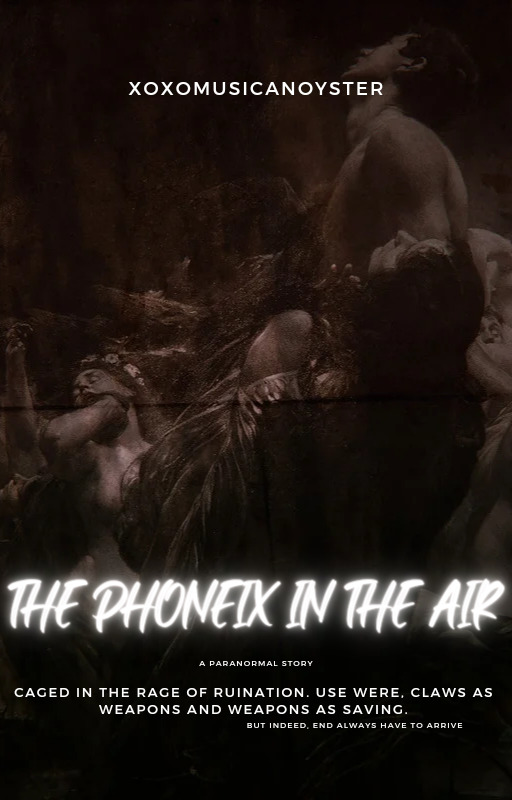
The Phoneix in the Air
"For those who grew up too early, your madness for the dreams of your heart shouldn't be defeated by sanity of your brain"
-N.m
A werewolf story, also posted on wattpad with the same username.
#werewolf smut#writers#literature#words#fated mates#lovers#couple#king and queen#mate#claimed#prophercy#mythical#histroical romance#paranormal#romance#kingdom#alpha#battles
2 notes
·
View notes
Text
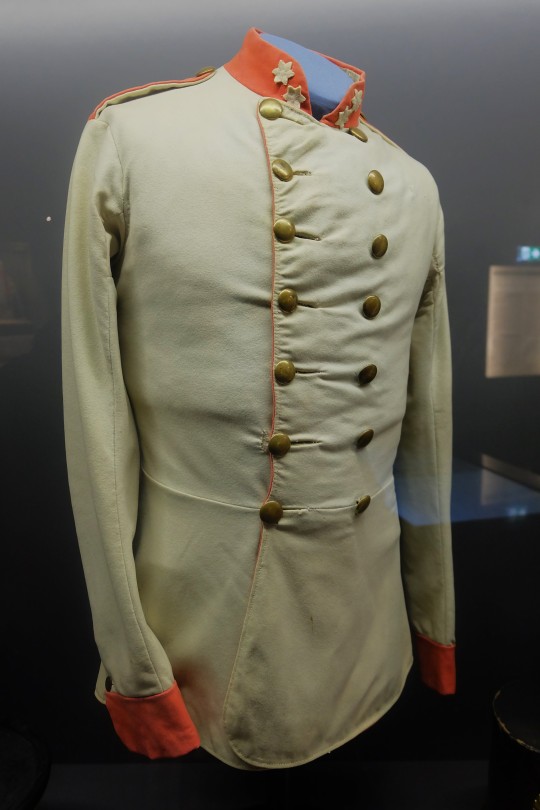
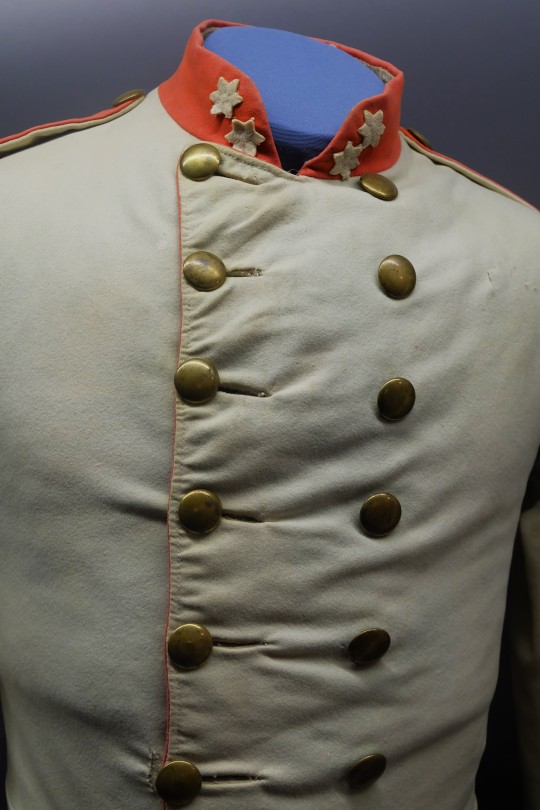
Korporals Uniform of the K.K. Infantry Regiment No. 59 of the Austrian Empire dated 1849 on display at the Rainer Regiment Museum in Salzburg
The 59th infantry was stationed as a house regiment in Salzburg after it became part of the Austrian Empire in the wake of the Napoleonic Wars.
It would not take part in any major conflicts until the 1848/49 revolutions in Italy where they fought in a battle near Verona and was sent to the revolt in Bescia known as the "Ten Day sof Brescia" The Austrian Army surrounded the city and occupied the castle where the bombarded the population and destroyed many of the histroical monuments.
The people were unhappy with the authoritarian rule of the empire and inspired by France, rose up to establish a more democratic system. Around 1,000 civilians in Brescia were killed by the Austrian forces.
Photographs taken by myself 2022
#uniform#fashion#hapsburgs#austria#austrian#austrian empire#19th century#military history#salzburg#rainer regiment museum#barbucomedie
5 notes
·
View notes
Text
Major Project
- Further Refining
After my presentation we came to the conclusion that I need to compact the idea even further, we spoke about potential directions to take the idea to make it as successful as possible. We spoke about creating an exhibition/campaign for a museum, I like this idea as it gives me more to create and also allows me to explore parts of my original idea. We also spoke about looking into one part of steel, so for that I want to explore steel structures. Potentially creating a series of posters alongside a concertina to promote and celebrate the steel industry. For this project I now need to research into past campaigns and designs from museums and look at what makes them successful.
Kelham Island Museum, Sheffield
Established in 2021, the charity cares for the city’s collections of art, archaeology, social and industrial history, and natural science, alongside the Guild of St George’s John Ruskin collection and is home to the Ken Hawley Collection Trust’s Hawley Tool Collection.
We work with our communities to tell remarkable stories of Sheffield and its people, and celebrate its reputation for excellence in craft, making and innovation. Together with local, regional and national partners, we showcase home-grown creative talent and bring outstanding cultural experiences to the city.
https://www.sheffieldmuseums.org.uk/visit-us/kelham-island-museum/



Magna Science Adventure Centre,
set in the former Templeborough steelworks in South Yorkshire. It is a vast building, a third of a mile long and 150 feet high. Four pavilions house over 100 hands-on exhibits themed on Air, Earth, Fire and Water, the ‘elements’ needed for making steel, where you can discover science, technology and the region’s industrial heritage. The spectacular Big Melt Show re-creates the story of the steelworks.
https://www.visitmagna.co.uk/



- Art Exhibitions
Although these are different subjects to mine I still find it relevant to understand how it drew the audience how It uses a narrative that is engaging and also i can use them as inspiration in how my idea could look.
Lokame Tharavadu
The core idea of this exhibition, Lokame Tharavadu or 'the world is one family', is drawn from the verses of a Malayalam poem written by Vallathol Narayana Menon, which appeals to the universal spirit of humanity. Departments of Tourism and Culture and Alappuzha Heritage Project. The art exhibition is hosted at five venues in Alappuzha.
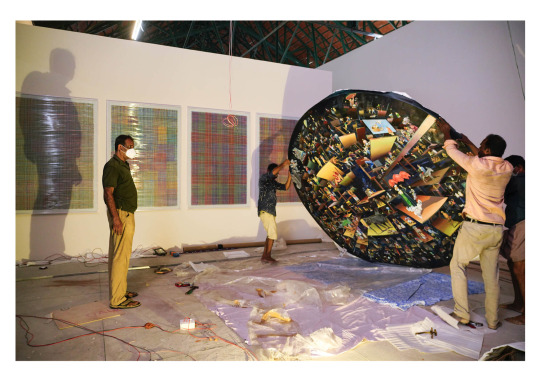
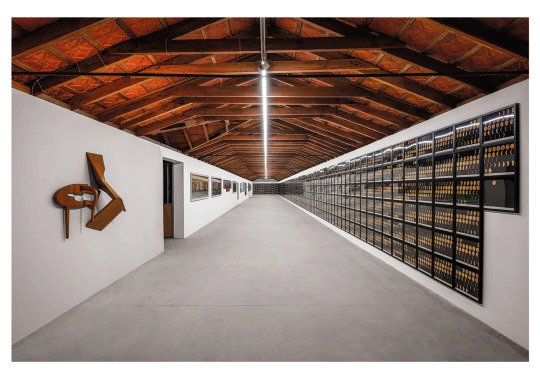
Rosângela Rennó: Small Ecology of the Image
The Brazilian artist Rosângela Rennó has been obsessively studying images and their relationship to truth and dominant narratives for over 35 years. comprises 130 photography and video based works. From spectral, family-album portraits of soldiers in uniform that Rennó obscures with red tint, to granular images of street protesters creating a new view on history.
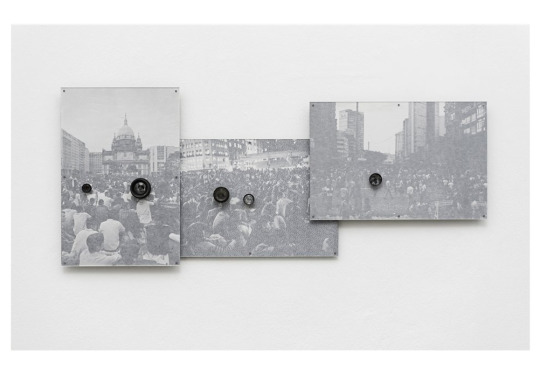

Alexander McQueen: Savage Beauty
Alexander McQueen's dashing creativity was expressed through the technical artistry of his designs and the dramatic intensity of his fashion shows. Drawing on avant-garde installation and performance art, these were also emphatically autobiographical. McQueen fearlessly challenged the conventions of fashion.


Against The Odds
Designed by C&G Partners,this thoughtful project encouraged visitors to learn about the lives of refugees and rescuers through various media. The exhibition has won numerous awards.
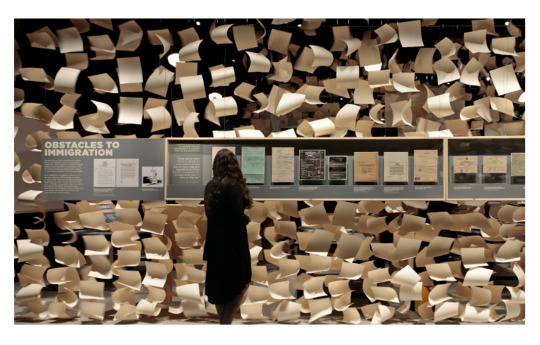

- Focusing on Histroic Exhibitions
After exploring a few successful exhibits and how they capture the audiance and communicate their theme and narrative, I thought it was now important to look at Historic Exhibitions as I want to explore the historic and famous structures of steel. So this is now more relevant to my project and helps me to understanding how to better create a new visual representation of history.
Back from the Dead: Demystifying Antibiotics
The exhibition includes work of bioartist Anna Dumitriu, who creates artwork through the direct sure of bacteria and has engaged internationally with issues of microbial resistance. The Museum's Director Dr Silke Ackermann comments that "Back from the Dead brings together past and future science with contemporary medical challenges in a novel way, revealing an extraordinary Oxford story and the human face of research in dramatic times".
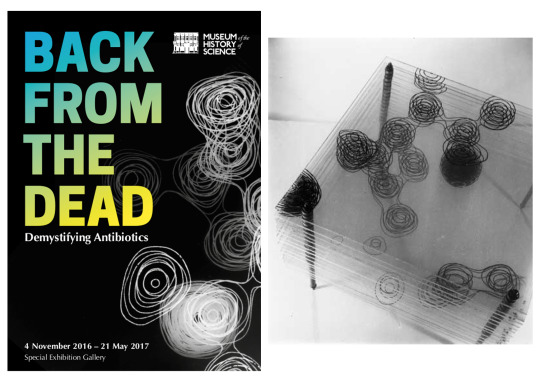
Precious and Rare: Islamic Metalwork from The Courtauld
Discover how each precious and rare object is a 'cultural conversation', with its own unique story which always starts and ends in a different place. And those cultural conversations continue today, with objects and stories from the Multaka Oxford volunteers and the local community — including an interactive digital programme where you can design your own Islamic-inspired patterns.
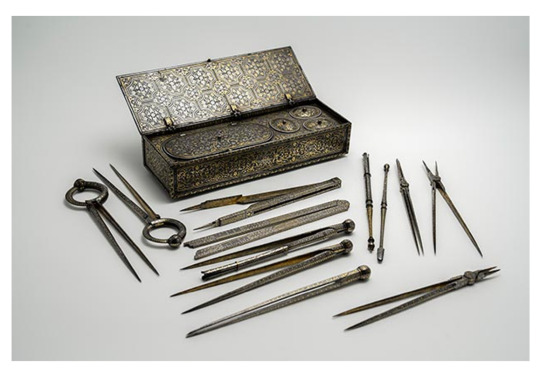

Atmospheres
An exhibition by the Museum of the History of Science in collaboration with Atmospheric, Oceanic and Planetary Physics and the School of Geography and the Environment at the University of Oxford.

Anvilled Stars
Matthew Galpin's meteor mirrors are hiding amongst objects in the Museum's Top Gallery. This temporary exhibition ran from 20 November 2010 to 6 February 2011.

- Sources
https://hyperallergic.com/697772/the-best-of-2021-our-top-10-exhibitions-around-the-world/
https://fastforward.photography/rosangela-renno-small-image-ecology/?utm_source=rss&utm_medium=rss&utm_campaign=rosangela-renno-small-image-ecology
https://segd.org/20-most-influential-exhibit-designs-century
https://www.theartnewspaper.com/2020/03/31/arts-most-popular-here-are-2019s-most-visited-shows-and-museums
https://www.hsm.ox.ac.uk/past-exhibitions-and-displays
https://segd.org/against-odds-exhibition-0
https://www.mhs.ox.ac.uk/backfromthedead/
https://www.hsm.ox.ac.uk/islamicmetalwork
2 notes
·
View notes
Text

Pre-order link is now live! You can order the ebook of One Smile More, my poly vampire dark histroical fantasy based in Victorian London! Regular mutuals will have seen so many posts about Ena and my various shenanigans getting her done, but now she bursts into the world soon.
#chazz writes#One Smile More#chazz rambles#writing#writers on tumblr#new book#preorder#dark fantasy#vampire#poly
1 note
·
View note
Text
Hey guys? What’s a good alt/histroical alt style that might fit a half silver dragon hearth witch who lives in a Louisiana swamp?
0 notes